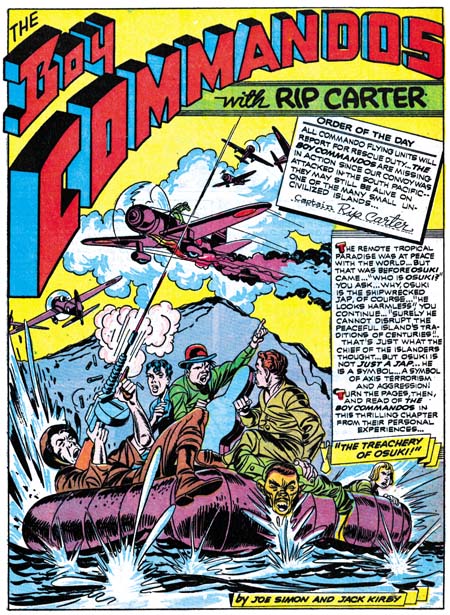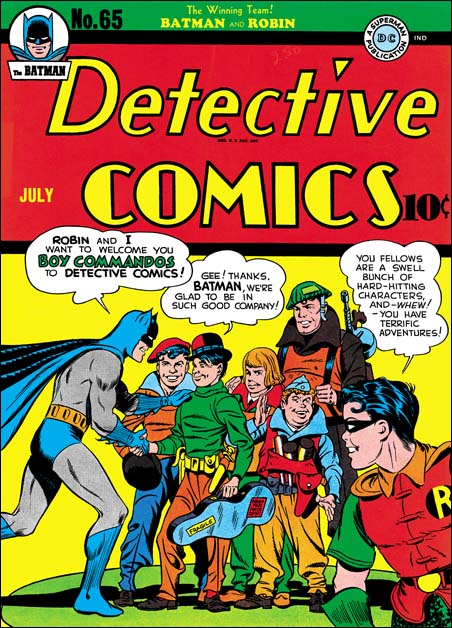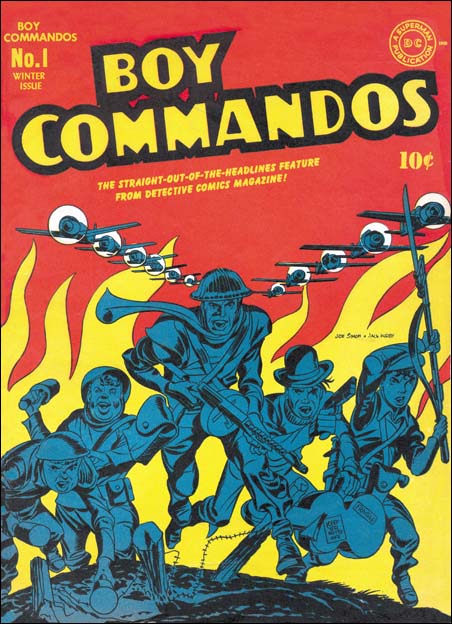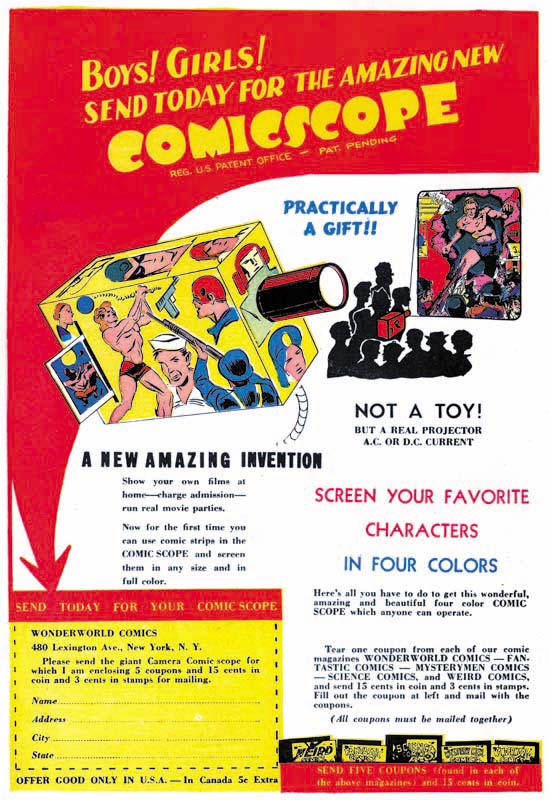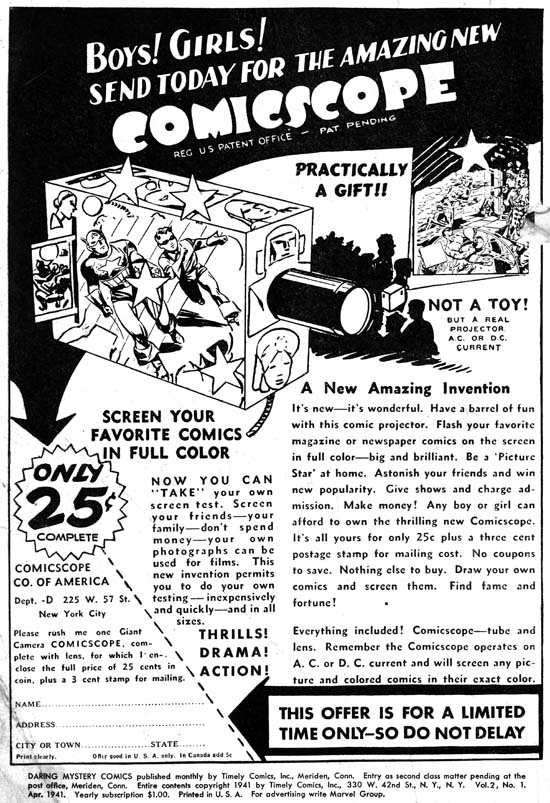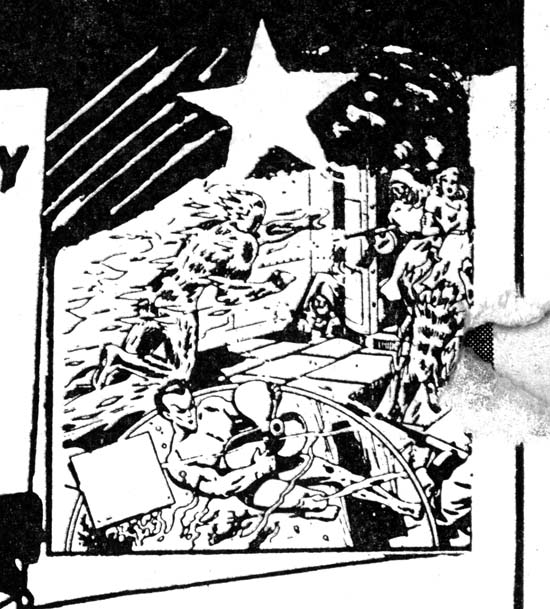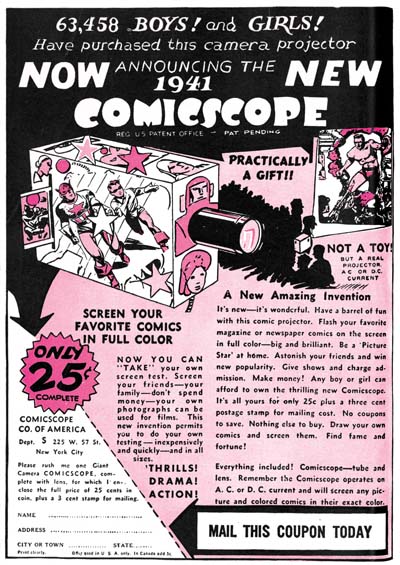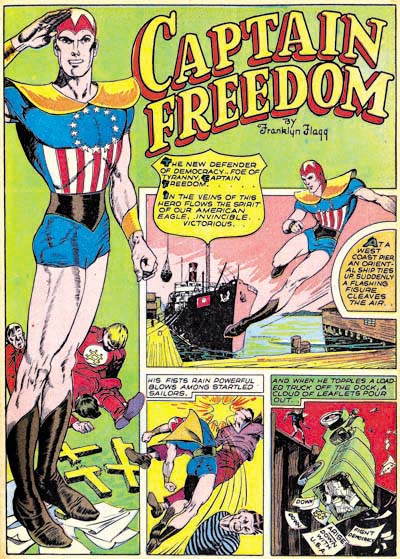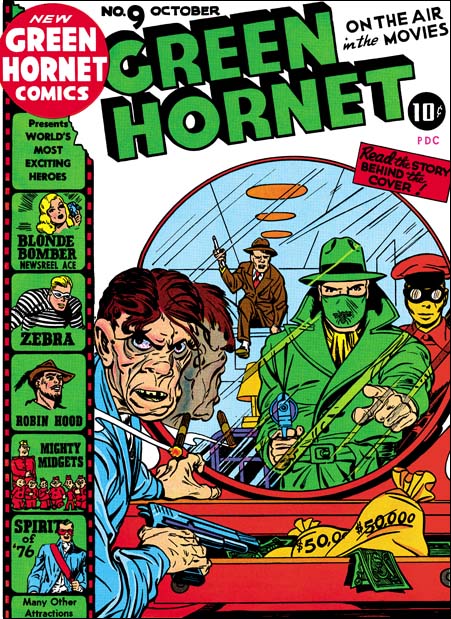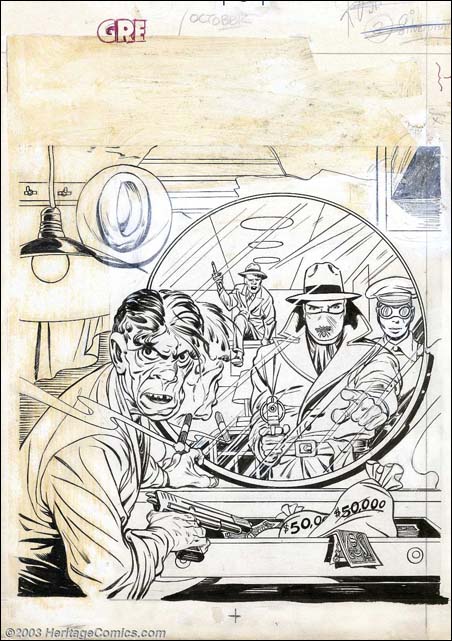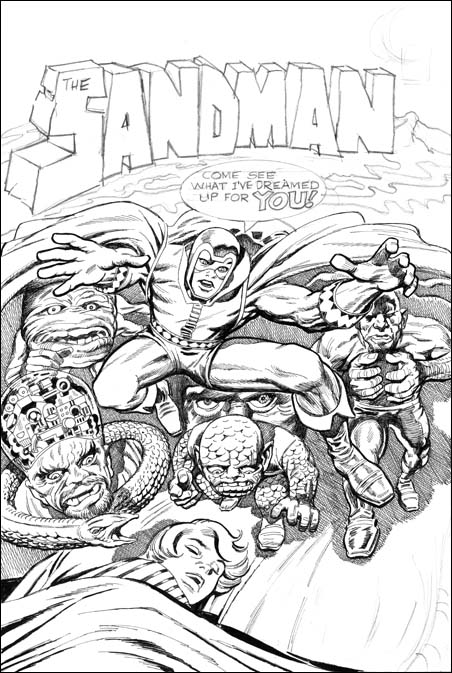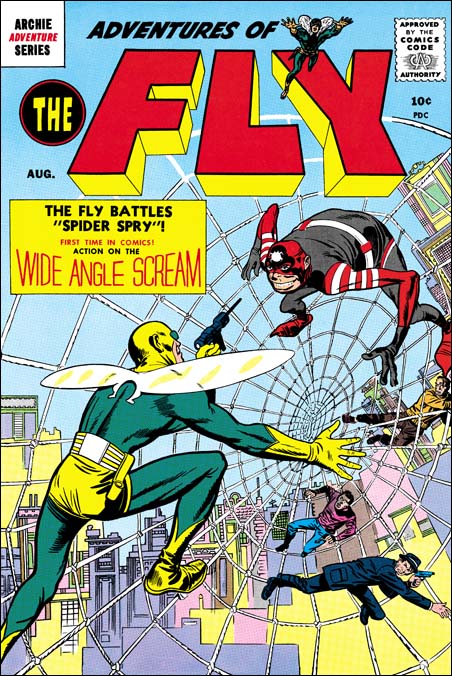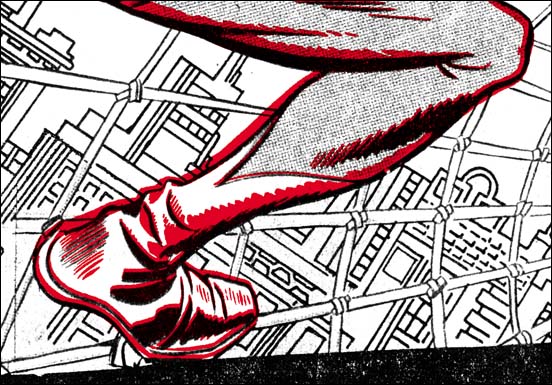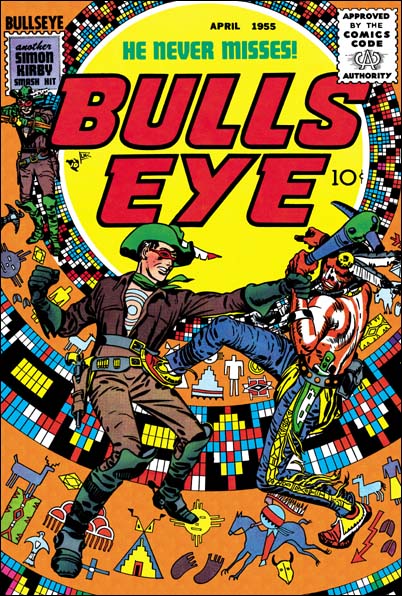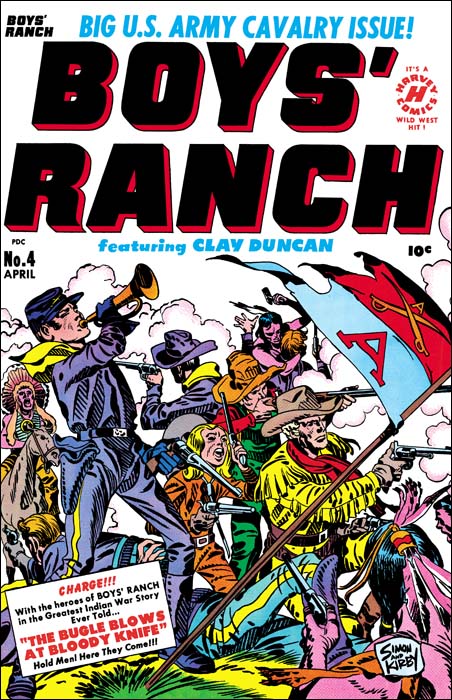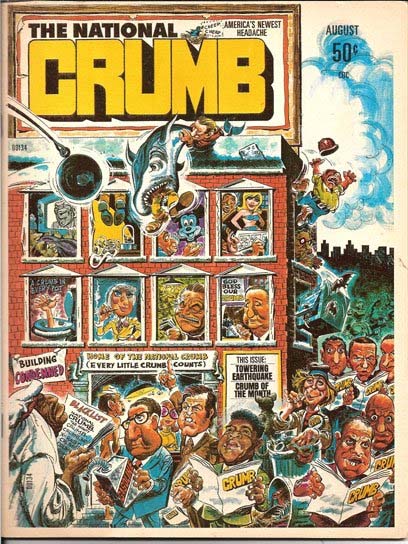In my serial post on “Early Jack Kirby” I commented that I regretted that I only had a few scans of The Vision from Marvel Mystery Comics. I find those that I have very enjoyable provided that to do not let some of the logical inconsistencies bother you. I believe the only way to enjoy any superhero story is to not take them too seriously. Actually I rather enjoy the inconsistencies.

Marvel Mystery Comics #24 (October 1941) The Vision by Jack Kirby page 1
The Vision lives in another dimension, entering and exiting this one through smoke. The sole purpose of his visits to Earth seems to be fight evil, which despite the war going on in Europe and Asia, somehow only occurs in America. In this story his foe is someone the Vision is already familiar with. It is Grosso from the war-dust world who has a similar mode of transportation as the Vision only instead of smoke uses metal dust. Grosso comes from a world that relishes war and he has decided that our dust free world would be a suitable place for his people to live and easy to conquer. Grosso method is to enter a weapon factory via the metal dust they produce and destroy it. The Vision soon detects the presence of Grosso’s evil and enters into battle with him. Grosso does seem to have some advantages. One is that he is able to control how fully he is in this dimension. When Grosso is only partly in our world the Vision is unable to touch him. Grosso is also able to use metal dust as a weapon or even a poison.
But the biggest difficulty that the Vision faces is that he does not know where Grosso is going to attach next. The Vision puts on a hood and some glasses as a disguise and gets hired at the largest factory expecting that Grosso will turn up. He tells his employer that he hides his face because it was disfigured when a factory was destroyed by Grosso. The ability of the Vision to appear as a normal mortal that was seen in the first Vision story now seems gone. Also surprising is that nobody seems to make any comment about the disguised Vision’s green hands. Of course in the end the Vision soundly defeats Grosso. It would even appear that Grosso was killed, but we all know how often a good villain stays dead.
This Vision story came out toward the end of Simon and Kirby’s stay at Timely and it shows. Included are lots of irregularly shaped panels, figures that extend beyond the panel edges, running figures with legs stretch out to an unrealistic degree, and square fists. The splash page is particularly effective. Note how over large the figures of the Vision and Grosso are. Such use of over sized figures was not typical for Kirby through most of his career. On the other hand Joe Simon did use large figures from time to time both before teaming up with Jack and after their split. Covers create by Simon and Kirby at Timely never used this motif but over sized figures occur often in their Timely splashes.
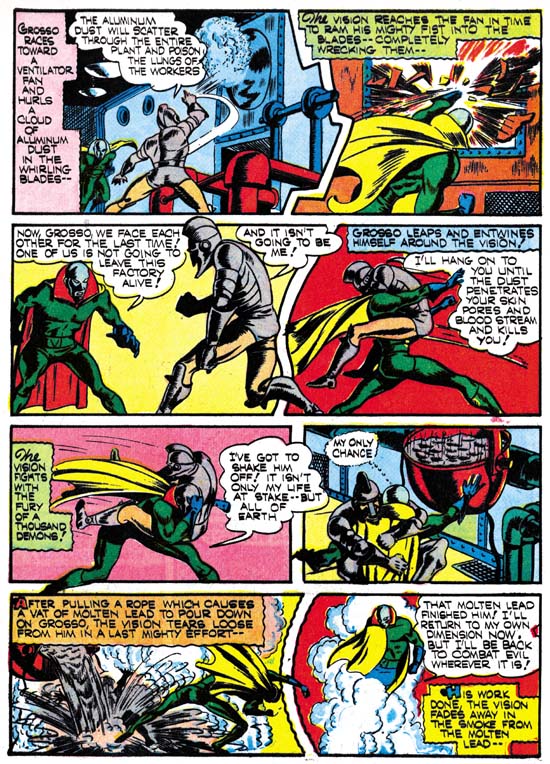
Marvel Mystery Comics #24 (October 1941) The Vision by Jack Kirby page 7
Check out the dialog from the third panel on page eight.
Vision: Now, Grosso, we face each other for the last time! One of us is not going to leave this factory alive!
Grosso: And it isn’t going to be me!
I have to admit I had to read it several times before I could convince myself that they got it right. It reminds me very much of the script in another story that Jack drew about years later from Tales of Suspense #92
on last panel of page 9
Cap: Okay mister, I’m ready for you! So let’s wrap it up. Only one of us is gonna walk out of here under his own steam…
on first panel of next page
Cap: and it won’t be me!
In this case comes out wrong no matter how many times you read it. Because the story was done by the Marvel method it is not clear whether this snafu should be blamed on Jack Kirby or Stan Lee. Despite the fact that the Vision and Cap stories were done about 20 years apart, the similarity between these two scripts make me suspect that it was Jack who came up with Cap’s goof-up.


